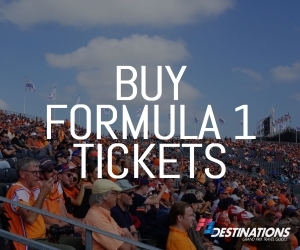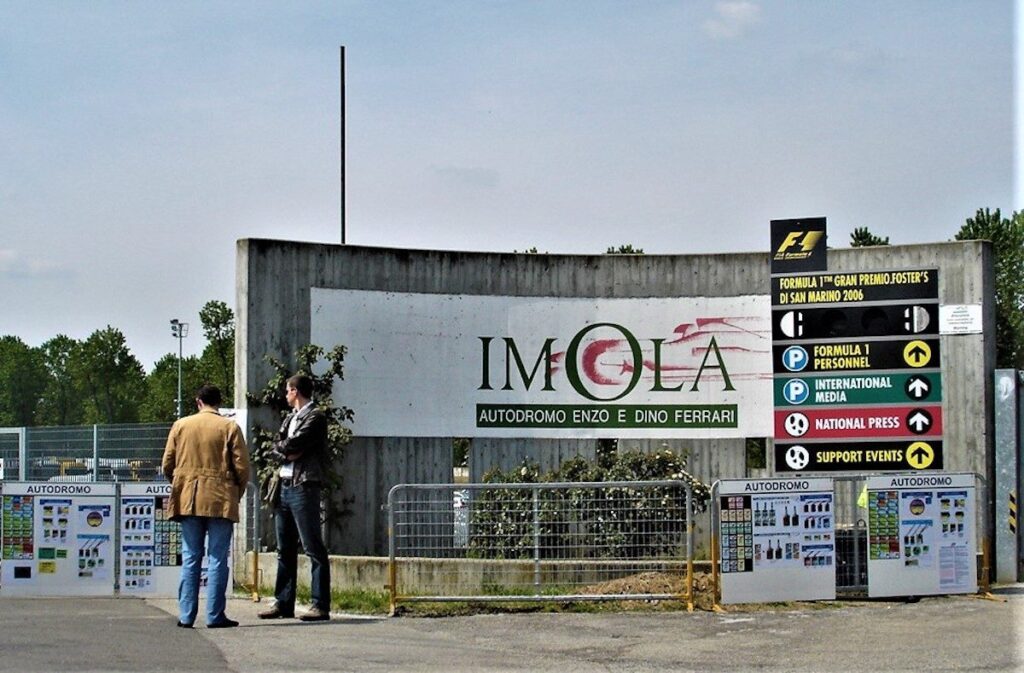
Károly Méhes looks back on the advent of F1 racing at Autodromo Imola, speaking to those who were there to witness the legendary Gilles Villeneuve at the peak of his career.
The first racing circuit in the town of Imola was built in 1953, but it would take a few decades before it became a proper Formula 1 track. Initially called Autodromo di Castellaccis, the circuit was renamed after Alfredo (Dino), son of Enzo Ferrari, after his premature death in 1956. Following the Ferrari founder’s death in 1988, the circuit was renamed once again to Autodromo Internazionale Enzo e Dino Ferrari. Minor races were held at Imola in 1963 in which several Formula 1 cars took part and the dominant force of the era, Jim Clark, won in a Lotus.
Towards the end of the 1970s, the hazardous nature of Formula 1 came into focus even more after the fatal accident of Ronnie Peterson in the 1978 Italian Grand Prix at Monza. In response, the owners of the legendary circuit outside Milan announced their plans to invest in a substantial reconstruction. Increased run off areas and a new track surface saw Monza already much improved for the next edition of the Italian Grand Prix in 1979, but more time was needed to construct a new pit building and associated infrastructure; a substitute circuit would need to be found for the 1980 Italian Grand Prix.
Autodromo Imola, only 265 kilometres to the east of Monza and quite close to Ferrari’s headquarters in Maranello, was a logical choice. However, the officials and FISA (the governing body of the motorsport’s governing body at that time) decided that a test event was needed before awarding Imola such a prestigious race. The non-championship Dino Ferrari Grand Prix was held in September 1979.
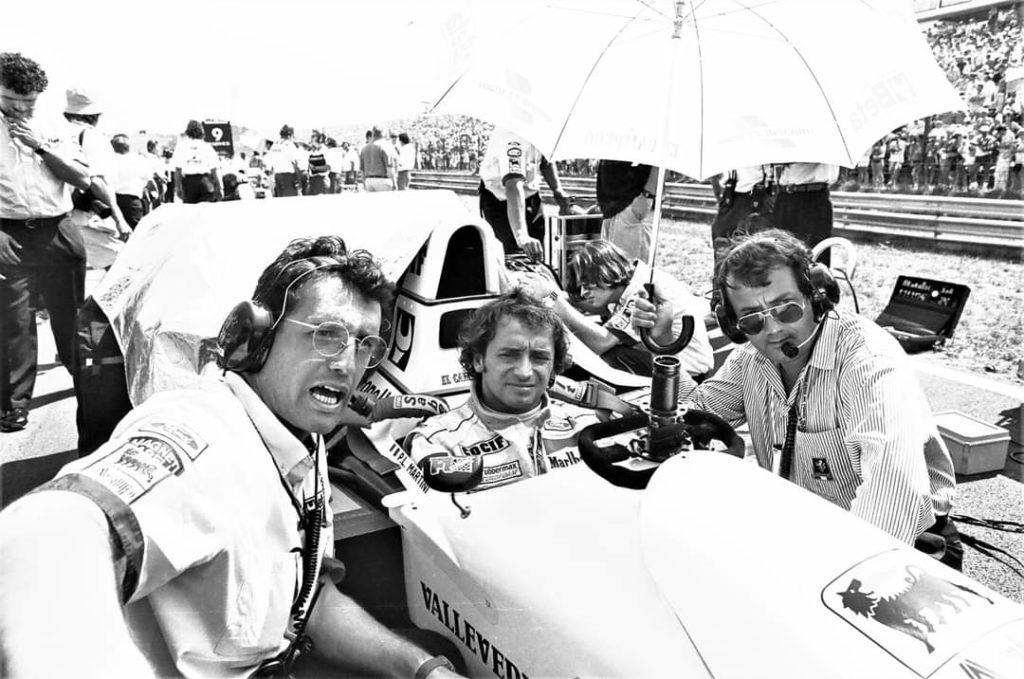
Gian Carlo Minardi, ex-F1 team boss and today in charge of Autodromo Imola, has clear memories of that time, 44 years ago
“In the second half of the 1970s, the circuit director was Roberto Nosetto, former Sporting Director of Scuderia Ferrari. In 1979 he went to see Enzo Ferrari who, of course, had a strong emotional connection to the circuit that was named after his son, Dino.
It was easy to convince him to help Imola host Formula 1 races, and even more, to help to improve the facilities at the circuit. Nosetto led the redesign of the pits, the construction of the control tower and new grandstands, and had new asphalt laid at the track.
Parallel to this, they eliminated some sections of the circuit that were still used as urban roads. The circuit became permanent, and it was homologated by the international authorities. Originally, it was planned that it would alternate every two years with Monza after 1980 as the Italian Grand Prix; but already in 1981, Monza returned as host of the Italian Grand Prix, and Imola was destined to become the venue for the San Marino Grand Prix.”
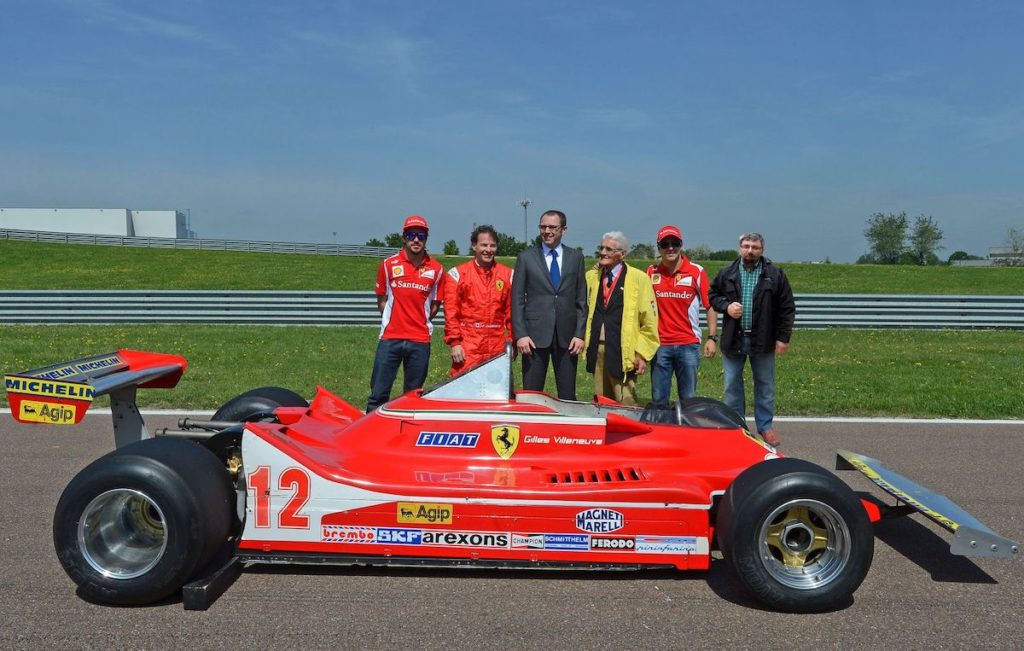
1979 Dino Ferrari Grand Prix
For the Dino Ferrari Grand Prix in September 1979, the entry list consisted of only 16 cars: Ferrari, Alfa Romeo and Shadow fielded two cars each, while all the other teams brought just one. Renault and Ligier did not even enter. However, Williams entered two “hired” cars from the 1978 season, driven by motorbike legend Giacomo Agostini and the 41-year-old local star “Gimax” (real name, Carlo Franchi.)
Ferrari arrived at Imola in 1979 having clinched both the drivers and constructors titles the week before at Monza with a dominant 1-2 result. The Ferrari drivers duly locked out the front row for the Dino Ferrari Grand Prix, with Gilles Villeneuve taking pole from his teammate and new World Champion, Jody Scheckter. Carlos Reutemann (Lotus) and Niki Lauda (Brabham) started on the second row.
The 40-lap race was initially dominated by Villeneuve, before Lauda, who up until this point had suffered a miserable season with Brabham, came to life and passed the Canadian as the laps counted down to the chequered flag. Ever impatient, Villeneuve ran into the back of Lauda’s Brabham while attempting to get back past and was forced to pit for a new front wing. Lauda coasted to victory, but no points were awarded for the non-championship race. The Dino Ferrari Grand Prix was to be Brabham’s last race with the thirsty Alfa Romeo engine. Two weeks later in Canada, Brabham debuted the new Cosworth-powered BT49, and Lauda unexpectedly announced his retirement.

Some Italian friends of mine were lucky enough to be present at the 1979 Dino Ferrari Grand Prix and shared their memories. Vittorio Bentivoglio, pictured above, recalls the race as one of the biggest adventures of his youth:
“I lived in Mordano, about ten kilometres from the Imola circuit, so it was a great opportunity to see Formula 1 live once again. It was also a personal mission to attend this race at Imola in memory of my father, who passed away earlier that year. He had ignited my passion for Formula 1 and taken me to seven races during the 1970s at Monza and in Austria, despite his ill health in later years.
Like many other Ferrari fans, I had been infected by “Villeneuve Fever.” I loved watching the exuberant and spectacular exploits of Gilles Villeneuve, who got the tifosi excited with his attacking style of racing. The wait for my first F1 race on the Imola track was electrifying, especially after Ferrari’s 1-2 at Monza the week before.
I was 16 years old and rode to the circuit with some of my friends on race morning before dawn. We entered the track illegally and without tickets, climbing over the wall behind Curva Tosa. We didn’t have to wait long before the early morning calm was interrupted by the Alfa Romeo of Bruno Giacomelli, who took to the track for some installation laps after the mechanics had installed a new engine overnight.
Expectations were high for the race after Villeneuve had qualified on pole with Scheckter alongside him. We were expecting another Ferrari 1-2, but the race developed in a different direction and Villeneuve was fighting the Brabham of Lauda. The crowd came to life every time the two drivers came past us.
It wasn’t to be. Villeneuve made contact under braking with Lauda on the approach to Tosa and his chances of victory evaporated. Stationed right next to Tosa, we were obviously disappointed. Neither Ferrari driver had won, though Scheckter did at least claim third, but even worse, the ‘traitor’ Niki Lauda had won! We’d never forgiven him after he left Ferrari a two years earlier.”
1980 Italian Grand Prix
Imola had passed the test. The circuit was given the rights to stage the 1980 Italian Grand Prix while construction continued at Monza on a new pits complex. Sadly, for the Ferrari fans, the competitive picture had changed substantially. The Williams of Alan Jones and the Brabham of Nelson Piquet were fighting for the title, and the Scuderia was nowhere, though it was no coincidence that Ferrari had brought their new turbocharged challenger, the 126C, to Imola for its debut. Villeneuve tried it our during practice, but was back in his old 312T5 for the race, which ended for the Canadian in a big crash.
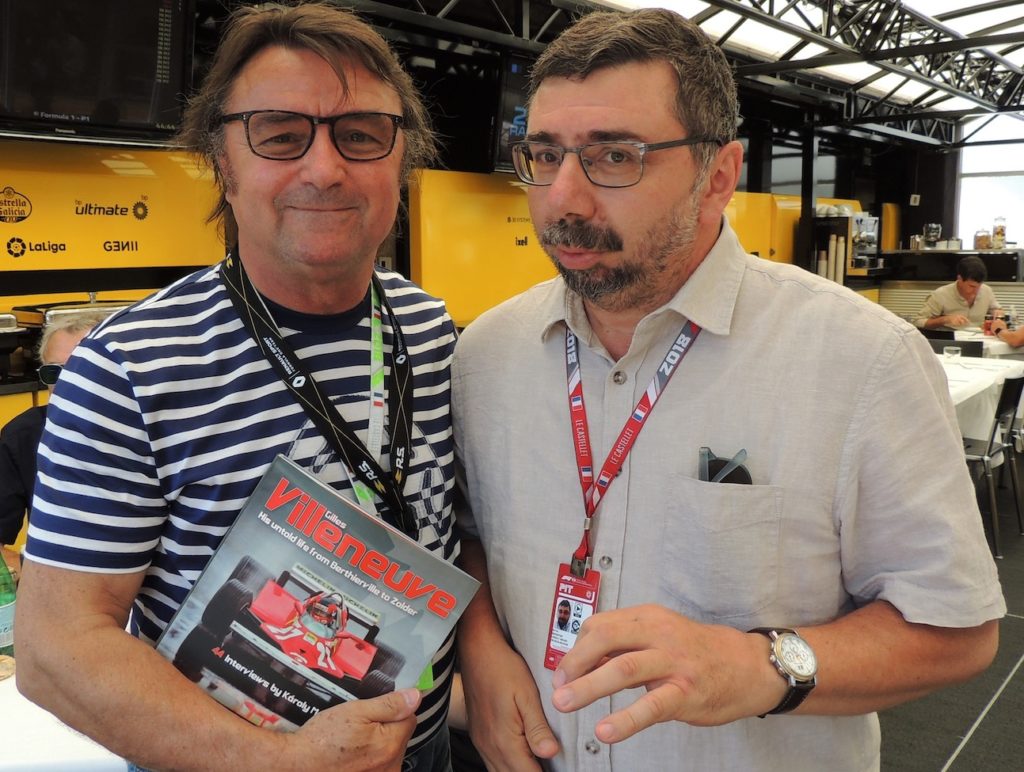
In one of my interviews with Rene Arnoux, the former Ferrari driver recounted his memories of Villeneuve’s big crash at Imola in 1980
“It was in the early laps of the race when I was leading. Suddenly, I came across a Ferrari in the middle of track. It had wheels missing, no wings, no engine and no gearbox, but the body of the car was somehow intact, not bad at all.
At this time, we had no radio or any communication, so I was very much afraid of what had happened. I finished the race and after returning to the pits, I immediately hurried to Ferrari, found Gilles, and asked how he was doing. He told me he was feeling fantastic, really happy. I couldn’t work out why he would say such a thing. But he explained that he had crashed at 280km/h and was uninjured. The car had saved him and that had made him happy.”
The 1980 Italian Grand Prix at Autodromo Imola was won by the Brabham of Nelson Piquet, who took the lead in the championship table. Formula 1 was satisfied, and it was decided that the circuit would remain a part of the calendar as the host of the San Marino Grand Prix. The rest is history. Notwithstanding the tragic events of 1994, when Roland Ratzenberger and Ayrton Senna lost their lives at the circuit, Autodromo Imola hosted many exciting races until it was removed from the F1 calendar after 2006.
Thanks to the covid pandemic, Autodromo Imola was given a second chance at Formula 1 in 2020 as host of the Emilia Romagna Grand Prix. The circuit is set to remain on the F1 calendar until at least 2025.



